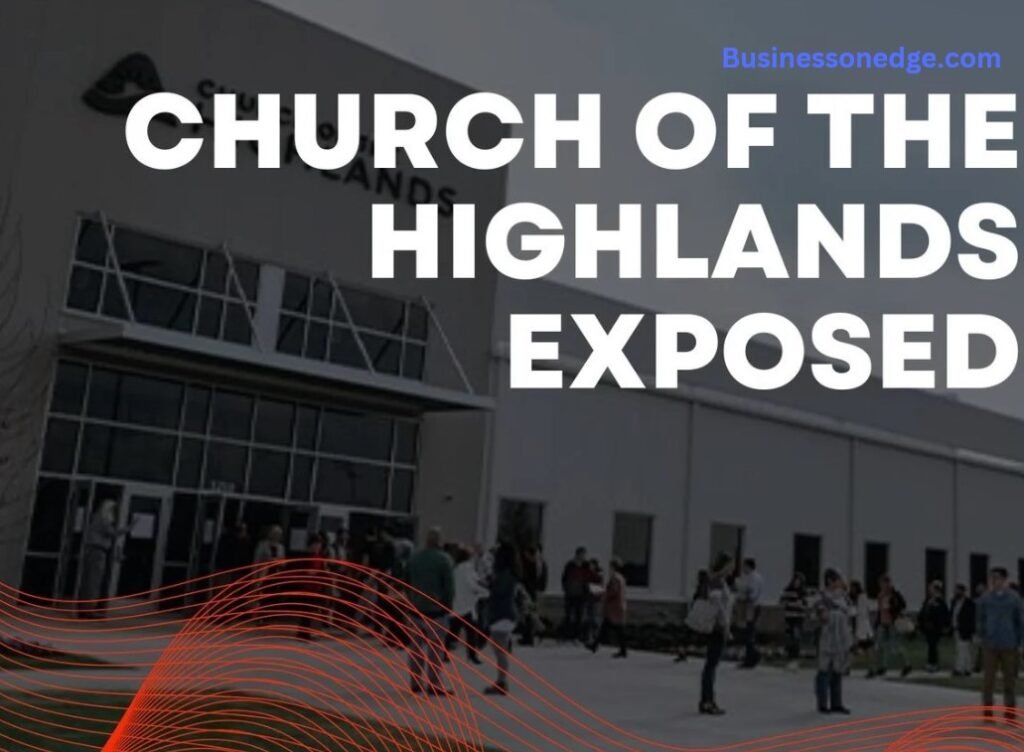Table of Contents
Church of the Highlands, one of the largest megachurches in the United States, was founded in 2001 in Birmingham, Alabama. From humble beginnings with just a few hundred members, the church rapidly expanded, driven by a vision to reach people far from God and teach them to follow Jesus step by step. The founding pastor, Chris Hodges, played a pivotal role in shaping the church’s mission and growth trajectory.
Under Hodges’ leadership, the church adopted a growth strategy that included launching multiple campuses across the state, employing a blend of contemporary worship services, practical biblical teachings, and community-oriented programs. This approach resonated with many, leading to a membership that now exceeds tens of thousands. The church’s vision is encapsulated in its fourfold mission: to know God, find freedom, discover purpose, and make a difference.
Despite its success, questions about the church’s origins often lead to discussions about its rapid expansion and the underlying factors contributing to its widespread appeal. Was it purely the charismatic leadership and innovative strategies, or were there other less transparent elements at play?
Leadership and Governance
The leadership structure of Church of the Highlands is hierarchical, with Pastor Chris Hodges at the helm. Hodges is supported by a team of pastors and elders who oversee various aspects of church operations. This leadership model is designed to ensure that decisions are made efficiently and align with the church’s mission and values.
Key figures in the leadership team include several associate pastors who manage different campuses and ministries. Each campus operates semi-independently but adheres to the overarching guidelines set by the central leadership. This decentralized model allows for tailored approaches to local community needs while maintaining a unified church vision.
However, this structure has also been a point of contention. Critics argue that such a hierarchical system can lead to an imbalance of power and lack of accountability. Instances where decisions made by the top leadership have faced backlash from the congregation and the public raise questions about transparency and inclusivity in the church’s governance.
Doctrinal Beliefs
Church of the Highlands adheres to evangelical Christian doctrines with a focus on practical and applicable teachings. Core beliefs include the inerrancy of the Bible, the necessity of personal salvation through Jesus Christ, and the importance of living out one’s faith through service and community involvement.
One of the church’s distinguishing features is its emphasis on the Holy Spirit’s active role in the believer’s life, including practices such as speaking in tongues and healing. These charismatic elements can be polarizing, attracting some and repelling others.
Certain controversial doctrines have sparked debate both within and outside the church. For instance, the church’s stance on social issues like LGBTQ+ rights and women’s roles in ministry has drawn criticism. While the church maintains that its positions are biblically founded, opponents argue that they are exclusionary and outdated.
Financial Transparency
Financial transparency is a critical issue for any large organization, and Church of the Highlands is no exception. The church’s funding primarily comes from tithes and offerings from its members. Additionally, it receives substantial donations and participates in various fundraising activities.
The allocation of these funds is a topic of interest and sometimes concern. Expenditures include operating costs for its numerous campuses, salaries for its extensive staff, and funding for its various ministries and community outreach programs. Critics have called for more detailed public disclosure of the church’s financial statements to ensure that funds are used responsibly and ethically.
Some have questioned the high salaries of top leaders and the significant investments in properties and facilities. While the church argues that these expenses are necessary for its growth and mission, others feel that more should be done to support charitable causes and assist those in need directly.
Social and Community Impact
Church of the Highlands is renowned for its extensive outreach programs and community involvement. These initiatives include health clinics, food drives, and educational support programs, aiming to make a tangible difference in the communities they serve. The church’s Dream Centers, for example, offer a variety of services to underprivileged areas, from job training to health screenings.
The church’s small groups, which meet regularly to foster fellowship and spiritual growth, also play a crucial role in community building. These groups help members form close-knit relationships and provide mutual support.
Despite these positive impacts, there are mixed feelings in the community. While many appreciate the church’s contributions, others are wary of its influence and worry about the potential for it to overshadow smaller local organizations. Additionally, some community members question the church’s motives, suspecting that its charitable activities are also aimed at expanding its membership base. ” church of the highlands exposed “
Controversies and Scandals
Like many large organizations, Church of the Highlands has not been free from controversies and scandals. Some of the most significant incidents include accusations of inappropriate behavior by church leaders, financial mismanagement, and conflicts of interest.
One notable scandal involved allegations against a prominent pastor for misconduct, which rocked the congregation and led to a broader discussion about accountability within the church. The leadership’s response, which included an internal investigation and public apology, was seen by some as inadequate and by others as a necessary step towards transparency.
Financial scandals have also plagued the church, with questions about the use of funds and the benefits received by senior leaders. Critics argue that the church’s financial practices lack transparency and that more stringent oversight is needed to prevent misuse of resources.
These controversies have prompted calls for reforms and greater accountability, but they have also tested the faith and loyalty of the church’s members. While some have left the church, disillusioned by the scandals, others remain steadfast, believing in the church’s mission and its ability to learn from its mistakes.
Media and Public Perception
The media’s portrayal of Church of the Highlands has been a mix of praise and criticism. On the one hand, the church is often highlighted for its rapid growth, community involvement, and innovative approaches to worship and outreach. On the other hand, it has been scrutinized for its scandals, doctrinal positions, and financial practices.
Public opinion is equally divided. Many admire the church for its positive contributions and strong leadership, while others are skeptical of its motives and concerned about its influence. Social media platforms have become battlegrounds for these differing perspectives, with supporters and detractors passionately voicing their views.
Media coverage tends to amplify the church’s achievements as well as its controversies, leading to a complex and multifaceted public image. How the church navigates this media landscape and addresses public concerns will be crucial for its future reputation and influence. ” church of the highlands exposed “
Future of the Church
The future of Church of the Highlands is a subject of much speculation and interest. As the church continues to grow, it faces the challenge of maintaining its core values and mission while adapting to an ever-changing cultural and social landscape. Potential reforms in governance and financial transparency could help address some of the criticisms and build greater trust among members and the broader community.
The church’s leadership is likely to continue focusing on expansion, both in terms of physical campuses and digital outreach. Embracing technology and innovative methods for engagement could play a key role in its future strategy.
Ultimately, the future of Church of the Highlands will depend on its ability to navigate controversies, maintain transparency, and genuinely serve its community. By addressing its challenges head-on and staying true to its mission, the church has the potential to continue making a significant impact both locally and globally.
Read More : VISUALFXDESIGNS







